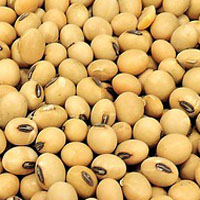Intraspecific competition as a driver for true production potential of soybean

Accepted: 8 October 2020
HTML: 65
All claims expressed in this article are solely those of the authors and do not necessarily represent those of their affiliated organizations, or those of the publisher, the editors and the reviewers. Any product that may be evaluated in this article or claim that may be made by its manufacturer is not guaranteed or endorsed by the publisher.
Highlights
- It is recommended to increase the sowing density in areas with less rainfall to compensate number of pods and number of seeds.
- Low intraspecific competition increased yield and nitrogen accumulation in the seeds as the plant density increased.
- In the wet year, strong intraspecific competition resulted in high yield and nitrogen accumulation only up to a density of 42 plants m–2.
- At very low crop density, the intensity of intraspecific competition is very low and blocked the manifestation of the plants’ true production potential.
- In the dry year, nitrogen uptake of soybean increased with plant density in the canopy up to the maximum density.
Phenotypic plasticity of agricultural plants is considered to be one of the main means by which plants cope with the variability of environmental factors. A major contributor to plant plasticity is sowing density, which has a relevant impact on competitive intensity concerning plant density in different environments (CI) and absolute severity of competition (ASC) concerning plant-plant responses to each other in canopy. A field experiment with soybean was set up at the Experimental Station in Prusy, Krakow, to determine the impact of intraspecific competition on growth, plant architecture, nitrogen accumulation, and yield of soybean as an effect of seven different plant densities and weather conditions. The study showed that intraspecific competition in soybean was conditioned by sowing density and access to water, thus revealing the true plant productive potential. Low intraspecific competition increased with plant density causing an increase in the yield of plants. In the wet year of 2014, strong intraspecific competition resulted in high yield and nitrogen accumulation only up to a density of 42 plants m–2, compared to dry years when nitrogen uptake of soybean increased with plant density in full range. The CI and ASC competition indices were sensitive to the varying amount of rainfall. Greater rainfall during crop vegetation increased the intensity of competition as well as the absolute severity of competition and decreased the relative yield with increasing density. In contrast, drought reduced intraspecific competition, eliminating it entirely at over 52 plants m–2.
How to Cite
PAGEPress has chosen to apply the Creative Commons Attribution NonCommercial 4.0 International License (CC BY-NC 4.0) to all manuscripts to be published.

 https://doi.org/10.4081/ija.2020.1709
https://doi.org/10.4081/ija.2020.1709



